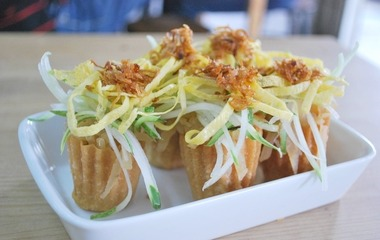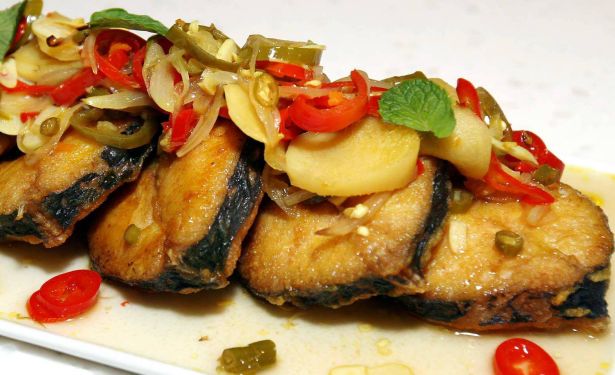A Peranakan food expert wants to ensure the cuisine lives on.
LAST week, I attended a talk at China House entitled “Cultural Surprises and the Evolution of Peranakan Cuisine” organised by Penang Heritage Trust as part of its Penang Heritage series of lectures.
Rather surprisingly, it was given by Australian food writer and TV personality Tony Tan. However, he does come with impressive credentials: the graduate in Renaissance History and Chinese Language is in the midst of writing two books: one about Hong Kong, and the other on Nyonya cooking.
The former restaurateur also runs his own top-ranked culinary school in Melbourne, where he has been based for the past 30-plus years. The Unlimited Cuisine Company is no false claim: his students come to learn different types of cooking, from Oriental – Chinese, Nyonya, Korean, Japanese, Thai, Vietnamese, Indian – and cross-cultural to western.
“We are fortunate to be born in Malaysia,” he said, “as it allows us to combine the best of both worlds.” This means he is able to use eastern techniques and ingredients to present his own interpretation of dishes which, he claims, is more acceptable to the sophisticated Australian palate.
Using our lor ark (braised duck) as an example, he explained how he stamps it with a definitive “Tony Tan” hallmark: the meat is cooked till soft then given a blast in the oven. This results in crispy skin but meltingly tender meat.
“People take one bite and go ‘Wow! What are we eating?’.”
The creative director of the prestigious annual Melbourne Food and Wine Festival Committee is a self-proclaimed pedantic – or is the word obsessive, I joked – cook who researches thoroughly any subject which captures his interest. Aesthetics and visual appeal – how it looks on a plate– are equally important.
I asked him how he came to be a chef in the first place.
“I’ve always loved cooking,” he said.
Growing up in Kuantan, Pahang, where his parents ran a restaurant – his mother was the cook – Tan developed a vivid curiosity about other cultures and their cuisines.
“It’s fascinating to see how food can be used as a medium to celebrate a family’s culture and background.”
What were his thoughts of Penang? “I first came here in 1994,” he replied, “as I was curious to find out more about Penang nyonya cooking.”
The last time he was here was in 1997. “I am staggered to see the changes. I love the way the inner city has evolved.”
In his short talk, Tan touched on what makes Peranakan cuisine what it is today. Although not a Baba himself, “I’ve always loved history, and learnt a lot about Peranakan culture from our neighbour (in Kuantan) who was a nyonya”, he explained.
“It is important to understand the origins of food. When you look into the annals of history,” he told the audience of about 40 who attended, “it is interesting to note that the Chinese were already living in this part of the world from the 5th Century.” Certain dishes came about because of this migration of people.
He cited the Portuguese as another example. “They sent their womenfolk to this part of the world, he said, “who then intermarried with locals.” On a visit to Portugal, he saw a kueh bahulu mould hanging on his friend’s kitchen wall.
“When I asked about it, she explained that it was used to make bolos, a Portuguese word for cake.” This, he believes, may have been the origin of the word bahulu.
The nyonyas, he went on to say, have been known to borrow ideas, adapt them, and pass them off as their own.
“The question is,” he asked enigmatically, “who borrowed from whom?”
As a logical conclusion to the session, the final question might be, “How does one move the cuisine forward?”
Tan feels that we – and not just Penang but together with Malacca and Singapore – should hold on to it and make it global.
“I would dearly love to see a Peranakan Centre of Excellence which will share ideas and research on how to take the cuisine and culture one step further.”
We should also be teaching chefs from the west how to incorporate this unique cuisine into their cooking, and extending it further, something that is apparently already happening – he’s come across Kueh Pie Tee shells filled with foie gras (goose liver) or chocolate mousse.
“This is very exciting and reassuring to see, as it is helping to elevate our humble Nyonya food to a different dimension,” he believes.
“I hear a lot of talk that the culture will die,” he said, “and it worries me. Nyonya cooking” he added,“is a true cuisine de la bonne femme, food that is typically cooked at home, and therefore, deserves a place on the global platform.”





